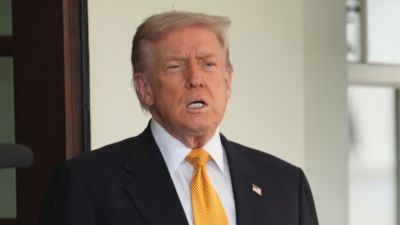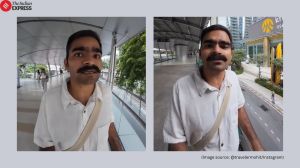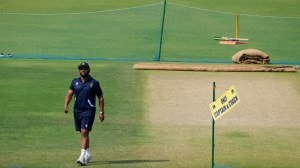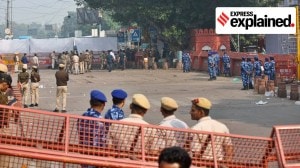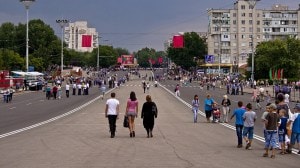How an art show explores ways of seeing a contagion
A Bengaluru exhibition traces how infections spread and its physical and emotional toll on societies
 Ant carrying leaf fragments; from the exhibit ‘Putting the Ant into Antibiotics’ (Courtesy: John Innes Centre, the UK/Science GAllery, Bengaluru)
Ant carrying leaf fragments; from the exhibit ‘Putting the Ant into Antibiotics’ (Courtesy: John Innes Centre, the UK/Science GAllery, Bengaluru)On February 21, 2003, 16 people from across the world, including a tourist from Toronto, a UK-based couple and an air hostess from Singapore, checked into Hong Kong’s Metropole Hotel and took the Severe Acute Respiratory Syndrome (SARS) back home with them. They most likely never met the source, a 64-year-old doctor from Guangdong, China, who was in town for a family wedding. But they did probably inhale the aerosolised particles emitted when the doctor vomited in the ninth-floor hallway. The contact reportedly led to around 546 cases of SARS across the globe.
In 2018, during their stint as artists in residence at the World Health Organization, members of the British collective Blast Theory researched how epidemiologists studied the movements of each of the guests in the Metropole Hotel that night. It led to the installation A Cluster of 17 Cases, featuring a scale model of the hotel floor and details of those who contracted the virus that night. Modified for online viewing, the work is now part of the exhibition “Contagion” (till June 13), presented by Bengaluru-based Science Gallery. With 16 interactive exhibits and 40-plus live programmes, the showcase explores facets of a contagion, including how diseases are transmitted and the emotions one goes through. “What we are looking for are expressions that are not pedagogical in the first instance, and not didactic, it’s creating an experience that will allow people to get an insight into what we call the creative processes, be it of knowledge production or artistic production; then from that insight find an ability to plug into how do scholars and artists ask questions, what is their starting point,” says Jahnavi Phalkey, founding director, Science Gallery.
Shortlisted from over 150 entries, the works nudge viewers to ask questions about the past and present. If the photographs in “Controlling the Plague in British India: A Visual History of the Plague” chronicle how colonisers tried to control the plague pandemic which arrived in India in 1896, Mumbai-based artist-researcher Ranjit Kandalgaonkar covers, on his 10-ft-long 2017 work Drawing the Bombay Plague, nuances of the events that unfolded on the streets: the strict authoritarian clampdown, rumours like snakes in drain pipes spreading the disease, filth and dirt as the disease vector; riots; mass exodus, quarantine measures that involved callous officials spraying streets and people with disinfectants, breaking and burning of dense hutments. “Even some of the measures taken by the colonial authorities to combat the 1896 Bombay Plague were similar to now. Within the context of a pandemic, historical study of the plague might shed light on some of the errors that are repeated. Diseases do not go away; they just resurface whenever we disturb the balance of climate, the environment and an ecosystem in temporary equilibrium. We stand at a pivotal point in world history. If connectivity by ships and mercantile routes could cause pandemics spanning years and a high death-rate (biomedicine has made advances and myths have been dispelled since), then what are the consequences of the hyper-globalised model where connectivity isn’t an issue? What is the outcome of that scenario?” writes Kandalgaonkar in a 2017 note accompanying the work. “The work aimed to highlight how misconceptions or perceptions about the plague persisted in the public’s experience of it through fear, fantasy, paranoia and rumour,” he says.
 ‘Barber at work in one of the camps’, 1897, Karachi Plague Committee Album, the photograph probably by R Jalbhoy (Wellcome Collection), from the exhibit ‘Controlling the Plague in British India’ by Christos Lynteris. (Courtesy: Science GAllery, Bengaluru)
‘Barber at work in one of the camps’, 1897, Karachi Plague Committee Album, the photograph probably by R Jalbhoy (Wellcome Collection), from the exhibit ‘Controlling the Plague in British India’ by Christos Lynteris. (Courtesy: Science GAllery, Bengaluru)
Building connections between science and art, the show demystifies several concepts. If Sarah Craske’s The Disease Map takes an engraving of the city of Basel in Switzerland by Matthäus Merian to create her disease map, in Mapping Cholera: A Tale of Two Cities, science journalist Sonia Shah and designer Don McCarey use interactive maps to study two cholera epidemics: New York in 1832 and Haiti in 2010. Photographs and video in Putting the Ant in Antibiotics document the efforts of scientists at the UK’s John Innes Centre, who are studying ants for new antibiotics to combat antimicrobial resistance.
The “Co-Vids” section has three-minute videos of global medical and public-health experts exploring top three questions on their minds. These include Shahid Jameel, virologist and director of the Trivedi School of Biosciences at Ashoka University, and former chair of the government’s Indian SARS-CoV-2 Genomics Consortia, and Keiji Fukuda, director and clinical professor at School of Public Health, The University of Hong Kong.
At a time when the word “contagion” instils fear, in a commissioned work Paris-based visual artist Anaïs Tondeur shows how laughter, too, is ironically contagious. In When the World Was a Laugh, Tondeur documents sounds of laughs recorded during the COVID-19 pandemic, with new ones added daily, to bring out “the mechanics of laughter, its physiological components, quality as a gesture and social significance”. “What we are looking for is not to build a narrative through the exhibition but to open various doors,” says Phalkey.





- 01
- 02
- 03
- 04
- 05


